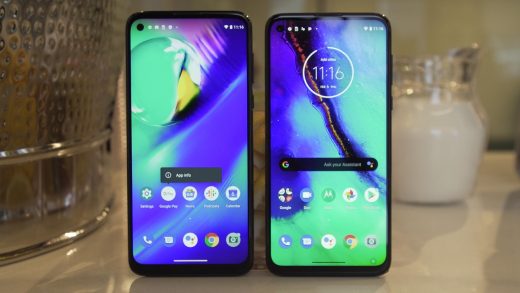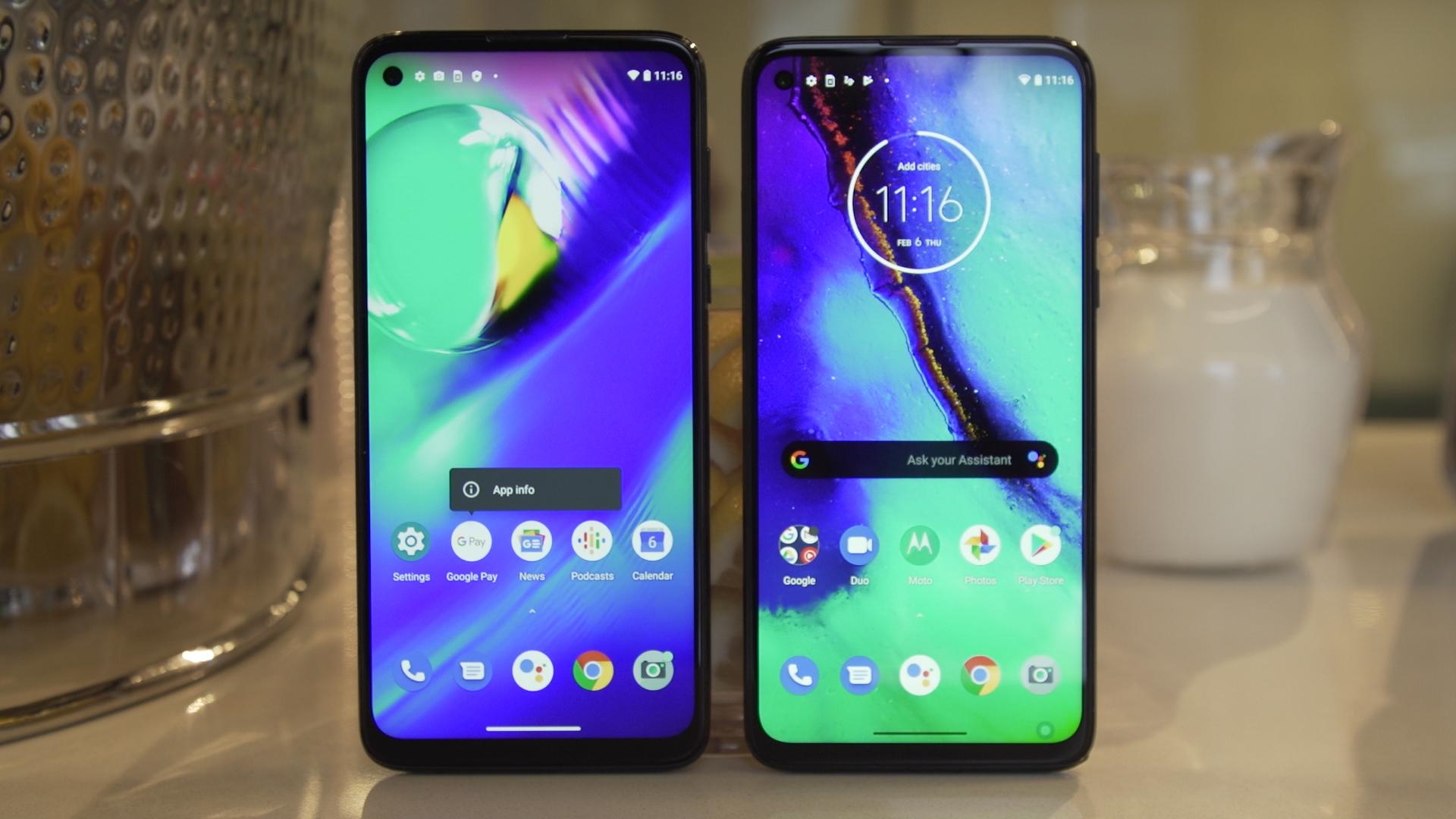Motorola’s new Moto G range includes a $300 Galaxy Note alternative
Motorola’s Razr might be getting all the attention, but mid-range phones like the Moto G are what have vaulted the brand back into profitability. In other words, those $250-ish phones are serious business, and the company’s latest models — the Moto G Power and Moto G Stylus — take the line in some interesting new directions.
Beyond that, this Moto G model also packs a curious triple-camera system. The 16MP main sensor seemed like an adequate performer in our limited hands-on time, though the dreary winter conditions in Chicago meant shooting gorgeous photos was pretty much out of the question anyway. The 8MP wide-angle camera performed about as well — its photos seemed just a touch underexposed — but captured a full 118 degrees of Chicago skyline anyway. The real oddball here is the 2MP macro camera which captured surprisingly detailed shots of quarters and flower bulbs, but seemed sort of unnecessary overall. I’m all for choice and flexibility in my smartphone cameras, but your mileage is really going to vary with this one — I can’t remember the last time I really wished I was carrying a macro lens.
The Moto G Power has its charms — namely, that tremendous battery — but the G Stylus is easily the more interesting of the two. That’s mostly because of, well, that stylus — it’s a far cry from the Galaxy Note’s S Pen and isn’t much more than a thin stick with a metal-mesh tip, but these things are so rare in general that Motorola deserves some credit for taking a stab at the concept. (That said, it feels a lot like the LG Stylo.)
As you probably guessed, the stylus does just fine when you want to scribble or doodle something quick on this 6.4-inch screen. When you pull the pen out of its hidey-hole, a small menu pops up that offers access to an instant note-taking app, and Motorola highlighted a few additional uses for the pen, like using it to select parts of a photo you’d like to animate as a cinemagraph. Beyond that, though, the stylus experience here is as basic as it gets.
That might be most apparent when you’re deep in a frenzied note-taking session. The phone’s total lack of palm rejection means it’s a little too easy to accidentally register a touch input when your hand rests one the screen. Once that happens, the stylus won’t seem to work at all. The fix is easy enough — just move your hand a little — but that’s easier said than done for some people. (I, for one, spend a lot of time cursing my meaty palms.)
In fairness to Motorola, the stylus is clearly optional, and it just might be worth investing in this $299 model over the Moto G Power because of a few component tweaks anyway. It’ll ship with 128GB of internal storage, double what the G Power comes with. Its camera is considerably more flexible, too: You’ll spend most of your time with a 48MP main sensor that, thanks to some pixel binning, produces perfectly passable 12-megapixel photos. We didn’t get too much time to pixel peep, but I’ve certainly seen worse photos from $299 phones, and I’d definitely take this main camera over the G Power’s.
It’s also worth noting that while the Moto G Stylus shares that 2MP macro cameras with the G Power, its approach to wide-angle shooting is a little different. Yes, it technically has a 16MP ultra-wide camera, but it’s the same sideways-mounted sensor we saw in last year’s One Action — in other words, it’s only there so you can shoot horizontal video while holding the phone vertically. It was a neat trick the first time we saw it, and I’m glad it wound up in a more mainstream phone, but I would like to take the occasional ultra-wide photo, Motorola. Just saying.
Despite a smattering of shortcomings, it’s hard to argue with the value Motorola is bringing to the table here. In the past, we’ve been hard-pressed to come up with solid alternatives in the same price range, and it looks like we’re looking at a similar story this year, too. I can live with that — Motorola has proven itself to be a company whose fortunes rise and fall on the backs of affordable smartphones, and its devotion to delivering the basics remains clear. It’s just that this year, Motorola seems intent on refining what “the basics” actually mean, and plenty of people stand to benefit from that shift in strategy. Now, if only the company would make a flagship phone…
They are, however, very similar phones. Both use Qualcomm’s Snapdragon 655 chipset with 4GB of RAM, not to mention the same 6.4-inch, 19:9 LCD screen running at Full HD+. Unlike the recently announced Moto G8 Plus, neither of these new models’ screens have a teardrop notch — instead, holes punched in their top-left corners reveal 16MP front-facing cameras. Throw in some Dolby-tuned stereo speakers, lightly tweaked builds of Android 10 and a new Gamesense feature that blocks notifications mid-frag, and you’ve got a solid shared foundation to work with.
At $249, the Moto G Power is less expensive of the two, and if I’m honest, it’s generally the less interesting model to boot. Easily the best thing about this phone is its massive, 5,000mAh battery, which Motorola rates for up to three days of continuous use. That’s not a record or anything — last year’s Moto G7 Power packed a similarly large battery — but customers keep clamoring for multi-day usage and Motorola seems happy to oblige.
(22)




